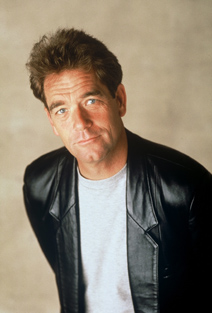Parting Shots: Huey Lewis

Although he’s best known for his iconic sound and countless hits from the 1980s, Huey Lewis is much more than a pop singer as evidenced by his new album of soul covers, Soulsville. His longtime band, The News, backs him and he’s reunited with producer Jim Gaines who engineered the group’s two biggest albums, Sports and Fore. Soulsville includes faithful renditions – recorded live to tape – of obscure songs from such legendary Stax artists as Wilson Pickett, Johnny Taylor, Otis Redding, Solomon Burke and The Staple Singers. What’s striking is how similar some of the material is to Lewis’ most well-known songs, specifically Taylor’s “Just the One (I’ve Been Looking For),” which sounds eerily reminiscent of the News’ “If This Is It.” By tracing his musical influences, Lewis learned a great deal about his own creative DNA. “You look at all this soul music, this is black and white people makin’ music together in Memphis,” he says. “Today, we have an integrated society but music’s so segregated and that’s a problem. I’ve always enjoyed the gray areas and that, to me, is where the creativity lies.”
The soul covers don’t sound that different from a lot of your greatest hits from the ‘80s.
It’s weird isn’t it? I had the same sort of realization. Suddenly when you listen to it, it’s like ‘Fuck, it almost sounds like Huey Lewis & the News.’ At the same time, it sounds like Johnny Taylor almost – it’s very strange, isn’t it?
What’s different about performing this newer material versus singing the “Power of Love” for the 1,000th time?
I like the newer stuff obviously, but I’m not gonna fall into the trap and tell you that I don’t like singing “Power of Love” because frankly I do. The fans go crazy and everybody loves it. I have no problem as long as I don’t have to do it 200 days a year and as long as I’m paid for it, which I am – thank you very much. This new stuff is a different thing because it’s more creative. The big realization is that it actually sounds like our stuff.
Why do you think that a three-minute pop song and a 20-minute “Good Morning Little School Girl” can move people equally?
Yeah, it’s the same, but it’s just different. One’s a haiku and one’s a novel. When we were coming up, there was no Internet or MTV yet and it was still a three-minute medium: Top 40 Radio. You had to get to the hook in 30 seconds or you were out of there. That was the puzzle you needed to solve to become successful enough to have a band – and that’s what we did. I make no apologies for it. But, had it been different times, we would have been a jamband for sure. We would have been Umphrey’s McGee.
How much direction did the Grateful Dead give you when you sat in with them?
They just said, “Come up and play.” It was the first time I ever had in-ear monitors, which are the strangest things ever. For the first song, Jerry [Garcia], just adjusted my volume and got my ears together. We’re playing along and he pointed and asked me [if I could hear myself] and I said, “No.” Right in the middle of the show, he came back and tended to my stuff while the song went on. It was so sweet.
Another time, I played with them was at the Bay Area Music Awards. It was Huey Lewis & The News and the Grateful Dead and I suggested a rehearsal, which was hilarious, but we did in fact do one. The first time we played “Good Morning Little School Girl,” there was this great part in the end where the lead changes and it goes to double time. In rehearsal, the whole thing was perfect and I thought, “Wow, this is really going to be great.” And, of course, the night of the show, it was terrible [Laughs].



















